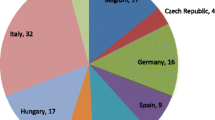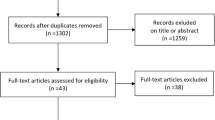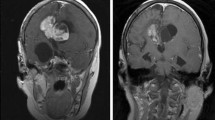Abstract
Everolimus is an orally administered inhibitor of the mammalian target of rapamycin (mTOR).
Everolimus (starting dosage 3.0 mg/m2) was associated with a significant reduction in the volume of the largest subependymal giant cell astrocytoma (SEGA) in 28 patients aged ≥3 years with tuberous sclerosis complex (TSC) in a phase II trial (C2485). At 6 months, 32% of patients treated with everolimus had a ≥50% reduction in the volume of their largest SEGA lesion (assessed via an independent central radiology review); 75% had a ≥30% reduction. No patients developed new lesions. During the extension phase of this trial (median duration 34 months), the reduction in SEGA volume was maintained, with no everolimus recipient requiring surgery or other therapy for SEGA or hydrocephalus.
In a phase III trial (EXIST-1) in 117 patients with SEGA associated with TSC, 35% of everolimus recipients (starting dosage 4.5mg/m2) versus none of the placebo recipients (p< 0.0001) had an overall response (a reduction in the sum of all target SEGA volumes of ≥50% relative to baseline, nonworsening of non-target SEGA lesions, no new SEGA lesions, and no new/worsening hydrocephalus).
Everolimus was generally well tolerated in patients with SEGA associated with TSC; most drug-related adverse reactions were mild to moderate in severity.








Similar content being viewed by others
References
Krueger DA, Franz DN. Current management of tuberous sclerosis complex. Pediatr Drugs 2008; 10(5): 299–313
Curatolo P, Bombardieri R, Jozwiak S. Tuberous sclerosis. Lancet 2008 Aug23; 372(9639): 657–68
National Institute of Neurological Disorders and Stroke. Tuberous sclerosis fact sheet [online]. Available from URL: http://www.ninds.nih.gov/disorders/tuberous_sclerosis/detail_tuberous_sclerosis.htm [Accessed 2011 Aug 20]
Crino PB. The pathophysiology of tuberous sclerosis complex. Epilepsia 2010 Feb;51Suppl. 1:27–9
Novartis Pharmaceuticals Corporation. Afinitor® (everolimus) tablets for oral administration: US prescribing information [online]. Available from URL: http://www.pharma.us.novartis.com/product/pi/pdf/afinitor.pdf [Accessed 2011 Aug 20]
European Medicines Agency. Votubia® (everolimus): summary of product characteristics [online]. Available from URL: http://www.ema.europa.eu [Accessed 2011 Nov 20]
Novartis Pharmaceuticals Canada, Inc. Afinitor® (everolimus): Canadian prescribing information. Dorval (QC): Novartis Pharmaceuticals, 2011
Dunn C, Croom KF. Everolimus: a review of its use in renal and cardiac transplantation. Drugs 2006; 66(4): 547–70
Novartis Pharmaceuticals Corporation. Zortress® (everolimus): US prescribing information [online]. Available from URL: http://www.pharma.us.novartis.com/product/pi/pdf/zortress.pdf [Accessed 2011 Sept 1]
Garnock-Jones KP, Keating GM. Everolimus: in advanced renal cell carcinoma. Drugs 2009 Oct 22; 69(15): 2115–24
European Medicines Agency. Afinitor® (everolimus): summary of product characteristics [online]. Available from URL: http://www.ema.europa.eu [Accessed 2011 Nov 20]
Abraham RT, Gibbons JJ. The mammalian target of rapamycin signaling pathway: twists and turns in the road to cancer therapy. Clin Cancer Res 2007 Jun 1; 13(11): 3109–14
Mabuchi S, Altomare DA, Cheung M, et al. RAD001 inhibits human ovarian cancer cell proliferation, enhances cisplatin-induced apoptosis, and prolongs survival in an ovarian cancer model. Clin Cancer Res 2007 Jul 15; 13(14): 4261–70
Beuvink I, Boulay A, Fumagalli S, et al. The mTOR inhibitor RAD001 sensitizes tumor cells to DNA-damaged induced apoptosis through inhibition of p21 translation. Cell 2005 Mar 25; 120(6): 747–59
Lane HA, Wood JM, McSheehy PM, et al. mTOR inhibitor RAD001 (everolimus) has antiangiogenic/vascular properties distinct from a VEGFR tyrosine kinase inhibitor. Clin Cancer Res 2009 Mar 1; 15(5): 1612–22
Boulay A, Zumstein-Mecker S, Stephan C, et al. Antitumor efficacy of intermittent treatment schedules with the rapamycin derivative RAD001 correlates with prolonged inactivation of ribosomal protein S6 kinase 1 in peripheral blood mononuclear cells. Cancer Res 2004 Jan 1; 64(1): 252–61
Tabernero J, Rojo F, Calvo E, et al. Dose- and schedule-dependent inhibition of the mammalian target of rapamycin pathway with everolimus: a phase I tumor pharmacodynamic study in patients with advanced solid tumors. J Clin Oncol 2008 Apr 1; 26(10): 1603–10
Meikle L, Pollizzi K, Egnor A, et al. Response of a neuronal model of tuberous sclerosis to mammalian target of rapamycin (mTOR) inhibitors: effects on mTORC1 and Akt signaling lead to improved survival and function. J Neurosci 2008 May 21; 28(21): 5422–32
Pollizzi K, Malinowska-Kolodziej I, Stumm M, et al. Equivalent benefit of mTORC1 blockade and combined PI3K-mTOR blockade in a mouse model of tuberous sclerosis. Mol Cancer 2009; 8: 38
Torres-Arzayus MI, Yuan J, DellaGatta JL, et al. Targeting the AIB1 oncogene through mammalian target of rapamycin inhibition in the mammary gland. Cancer Res 2006 Dec 1; 66(23): 11381–8
Boulay A, Rudloff J, Ye J, et al. Dual inhibition of mTOR and estrogen receptor signaling in vitro induces cell death in models of breast cancer. Clin Cancer Res 2005 Jul 15; 11(14): 5319–28
Treeck O, Wackwitz B, Haus U, et al. Effects of a combined treatment with mTOR inhibitor RAD001 and tamoxifen in vitro on growth and apoptosis of human cancer cells. Gynecol Oncol 2006 Aug; 102(2): 292–9
Ma BB, Lui VW, Hui EP, et al. The activity of mTOR inhibitor RAD001 (everolimus) in nasopharyngeal carcinoma and cisplatin-resistant cell lines. Invest New Drugs 2010 Aug; 28(4): 413–20
O’Reilly T, McSheehy PM, Wartmann M, et al. Evaluation of the mTOR inhibitor, everolimus, in combination with cytotoxic antitumor agents using human tumor models in vitro and in vivo. Anticancer Drugs 2011 Jan; 22(1): 58–78
Haritunians T, Mori A, O’Kelly J, et al. Antiproliferative activity of RAD001 (everolimus) as a single agent and combined with other agents in mantle cell lymphoma. Leukemia 2007 Feb; 21(2): 333–9
Shinohara ET, Cao C, Niermann K, et al. Enhanced radiation damage of tumor vasculature by mTOR inhibitors. Oncogene 2005 Aug 18; 24(35): 5414–22
O’Donnell A, Faivre S, Burris 3rd HA, et al. Phase I pharmacokinetic and pharmacodynamic study of the oral mammalian target of rapamycin inhibitor everolimus in patients with advanced solid tumors. J Clin Oncol 2008 Apr 1; 26(10): 1588–95
Fouladi M, Laningham F, Wu J, et al. Phase I study of everolimus in pediatric patients with refractory solid tumors. J Clin Oncol 2007 Oct 20; 25(30): 4806–12
Krueger DA, Care MM, Holland K, et al. Everolimus for subependymal giant cell astrocytomas in tuberous sclerosis. N Engl J Med 2010 Nov 4; 363(19): 1801–11
Kovarik JM, Sabia HD, Figueiredo J, et al. Influence of hepatic impairment on everolimus pharmacokinetics: implications for dose adjustment. Clin Pharmacol Ther 2001 Nov; 70(5): 425–30
Kirchner GI, Meier-Wiedenbach I, Manns MP. Clinical pharmacokinetics of everolimus. Clin Pharmacokinet 2004; 43(2): 83–95
Kovarik JM, Kahan BD, Kaplan B, et al. Longitudinal assessment of everolimus in de novo renal transplant recipients over the first post-transplant year: pharmacokinetics, exposure-response relationships, and influence on cyclosporine. Clin Pharmacol Ther 2001 Jan; 69(1): 48–56
Xu B, Wu Y, Shen L, et al. Two-dose-level confirmatory study of the pharmacokinetics and tolerability of everolimus in Chinese patients with advanced solid tumors. J Hematol Oncol 2011; 4: 3
Okamoto I, Doi T, Ohtsu A, et al. Phase I clinical and pharmacokinetic study of RAD001 (everolimus) administered daily to Japanese patients with advanced solid tumors. Jpn J Clin Oncol 2010 Jan; 40(1): 17–23
Kovarik JM, Beyer D, Bizot MN, et al. Blood concentrations of everolimus are markedly increased by ketoconazole. J Clin Pharmacol 2005 May; 45(5): 514–8
Kovarik JM, Beyer D, Schmouder RL. Everolimus drug interactions: application of a classification system for clinical decision making. Biopharm Drug Dispos 2006 Dec; 27(9): 421–6
Kovarik JM, Beyer D, Bizot MN, et al. Effect of multiple-dose erythromycin on everolimus pharmacokinetics. Eur J Clin Pharmacol 2005 Mar; 61(1): 35–8
Kovarik JM, Hartmann S, Figueiredo J, et al. Effect of rifampin on apparent clearance of everolimus. Ann Pharmacother 2002 Jun; 36(6): 981–5
Roach ES, Gomez MR, Northrup H. Tuberous sclerosis complex consensus conference: revised clinical diagnostic criteria. J Child Neurol 1998 Dec; 13(12): 624–8
Mehrotra N, Pfuma E, Garnett Q, et al. Exposure-response analysis as evidence for anti-tumour activity of everolimus in the treatment of patients with subependymal giant-cell astrocytoma (SEGA) associated with tuberous scleroisis (TS) [abstract no. 9550]. J Clin Oncol 2011; 29 Suppl
Krueger DA, Care MM, Holland K, et al. Long-term safety and efficacy results from an extension phase of an open-label, prospective, phase 1/2 trial of oral everolimus in patients with subependymal giant-cell astrocytomas in tuberous sclerosis complex [abstract plus poster]. Summit on Drug Discovery in TSC and Related Disorders: International TSC Research Conference; 2011 Jul 6–9; Washington, DC
Bebin M, Franz DN, Sahmoud T, et al. Everolimus in subependymal giant cell astrocytomas (SEGA) associated with tuberous sclerosis complex (TSC): results of EXIST-1, a double-blind placebo-controlled phase 3 trial [abstract]. 2011 European Multidisciplinary Cancer Congress; 2011 Sep 23–27; Stockholm
Franz DN, Belousova E, Curatolo P, et al. Results from a double-blind, placebo-controlled, phase 3 trial of everolimus in subependymal giant cell astrocytomas associated with tuberous sclerosis complex [abstract plus poster]. 29th International Epilepsy Congress (IEC); 2011 28 Aug-1 Sep; Rome
Franz D. Clinical trials in the USA for TSC and related disorders [abstract]. Summit on Drug Discovery in TSC and Related Disorders: International TSC Research Conference; 2011 Jul 6–9; Washington, DC
US National Institutes of Health. Efficacy and safety study of RAD001 in patients aged 18 or over with angiomyolipoma associated with tuberous sclerosis complex (TSC) or lymphangioleiomyomatosis (LAM) (EXIST-2) [ClinicalTrials.gov identifier NCT00790400]. US National Institutes of Health, ClinicalTrials.gov [online]. Available from URL: http://www.clinicaltrials.gov [Accessed 2011 Aug 23]
Acknowledgments and Disclosures
The manuscript was reviewed by: D.N. Franz: Department of Pediatrics, Cincinnati Children’s Hospital Medical Center, University of Cincinnati College of Medicine, Cincinnati, OH, USA; J. Hauptman: Department of Neurosurgery, Geffen School of Medicine at UCLA, Los Angeles, CA, USA; S. Sparagana: Division of Neurology, Texas Scottish Rite Hospital for Children, Dallas, TX, USA.
The preparation of this review was not supported by any external funding. During the peer review process, the manufacturer of the agent under review was offered an opportunity to comment on this article. Changes resulting from comments received were made by the author on the basis of scientific and editorial merit.
Author information
Authors and Affiliations
Corresponding author
Rights and permissions
About this article
Cite this article
Curran, M.P. Everolimus. Pediatr Drugs 14, 51–60 (2012). https://doi.org/10.2165/11207730-000000000-00000
Published:
Issue Date:
DOI: https://doi.org/10.2165/11207730-000000000-00000




